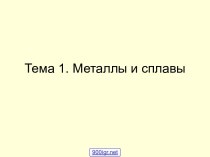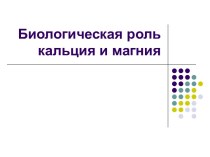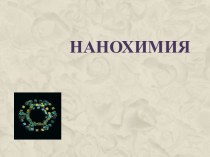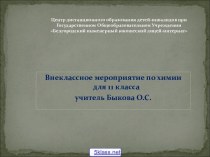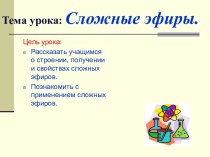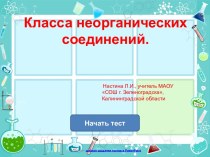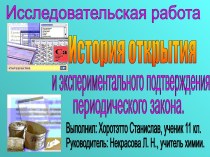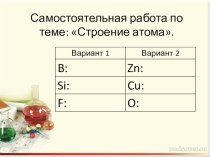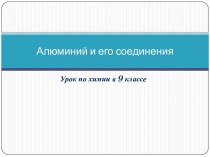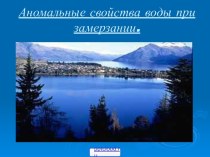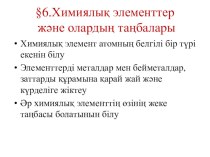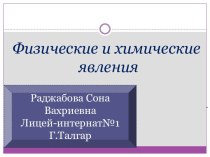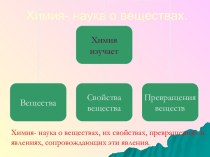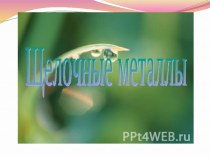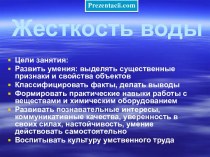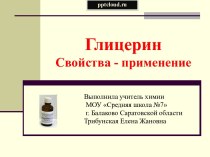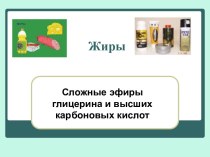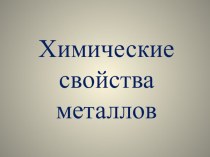Слайд 2
Generally metals which are not affected by hydrochloric
acid are called inert metals.
These metals are less
active than hydrogen.
Bismuth (Bi), copper (Cu), mercury (Hg), silver (Ag), gold (Au), platinum (Pt), palladium (Pd), osmium (Os), iridium (Ir), rutenium (Ru) and rodium (Rh) are inert metals.
Слайд 3
General Properties
They do not have a tendency to
have an ionic structure so they are inert in
chemical reactions.
They have very high density, so they are called heavy metals.
They are found in nature as pure metals.
Слайд 4
The extensive use of copper makes it the
second metal in commercial importance, after iron.
Electron configuration
is [Ar]3d104s1
Density : 8.92 g/cm3
It melts at 1084.6°C and boils at 2927°C
After silver, it is the second best conductor of electricity
Слайд 5
Copper is also used in the production of
alloys. Some important alloys are:
brass (Cu, Zn),
bronze (Cu,
Zn, Sn, or Al )
Слайд 6
OCCURRENCE
In nature, it is found as compounds and
in elemental form.
The most important copper minerals are chalcopyrite
(copper pyrite) (Cu . FeS2), chalcocite (Cu2S), agurite (CuCO3–Cu(OH)2), cuprite (Cu2O) and malachite (CuCO3 .Cu(OH)2).
Слайд 7
Chemical properties
Copper is a less active metal than
hydrogen. That's why it doesn't react with water, HCl,
diluted H2SO4 or other acids.
Слайд 9
Compounds of Copper
Copper has +1 and +2 charges
in its compounds. Ions with +1 are called copper
(I) or cuprous, and ions with +2 are called copper (II) or cupric.
The most important cuprous compounds are: copper (I) oxide (Cu2O), and copper (I) chloride (Cu2Cl2), and those of cupric compounds are copper (II) chloride (CuCl2), and copper (II) sulfate (CuSO4).
Слайд 10
Copper
Cu
BRONZE: Cu,Zn,Sn ALLOY
COPPER WIRE
Слайд 11
ZINC
Zinc is the first member of group 2B.
Zinc takes +2 oxidation state in its compounds.
Zinc is
a bluish-white metal
The density of zinc is 7.14 g/cm3.
Melting point is 419.5°C and boiling point is 907°C
Слайд 12
OCCURRENCE
Zinc is not found in elemental
form in nature.
It is found as compounds, such as
zincblende
(ZnS), willemite (Zn2SiO4 . H2O), smithsonite
or calamine (ZnCO3), and franklinite
(ZnO .Fe2O3) in crustal rocks.
Слайд 15
The metal is used principally as
a protective coating, or galvanizer, for iron and steel;
as an ingredient of various alloys, especially brass; as plates for dry electric cells; and for die castings. Zinc oxide, known as zinc white or Chinese white, is used as a paint pigment.
Слайд 17
Chromium is the first member of group 6B.
Pure
chromium is grey in color, hard and bright like
silver. The melting point is 1907°C, the boiling point is 2671°C and its density is 7.19 g/cm3 at
room temperature.
Слайд 18
OCCURRENCE
The percentage of chromium is about 0.14% by
mass in the earth’s crust.
The most important mineral of
chromium is chromite (FeO . Cr2O3), which has a brownish-black color.
Слайд 19
CHEMICAL PROPERTIES
The main oxidation states of chromium are
+2, +3 and +6, but it may exist from
+1 to +6 oxidation states.
Powdered chromium is more active. It may be reacted easily with NO3– and SO42– compounds, and with O2 gas.
Слайд 20
1. Chromium metal reacts with halo-acids, such as
HCl and HBr, slowly.
Слайд 22
COMPOUNDS
1)Chromium (III) Oxide, Cr2O3
Chromium (III) oxide is a
green colored powder.
Слайд 23
2) Chromium (VI) Oxide, CrO3
Chromium (VI) oxide is
a red colored solid that melts at 197°C. It
is a powerful oxidizing agent
























